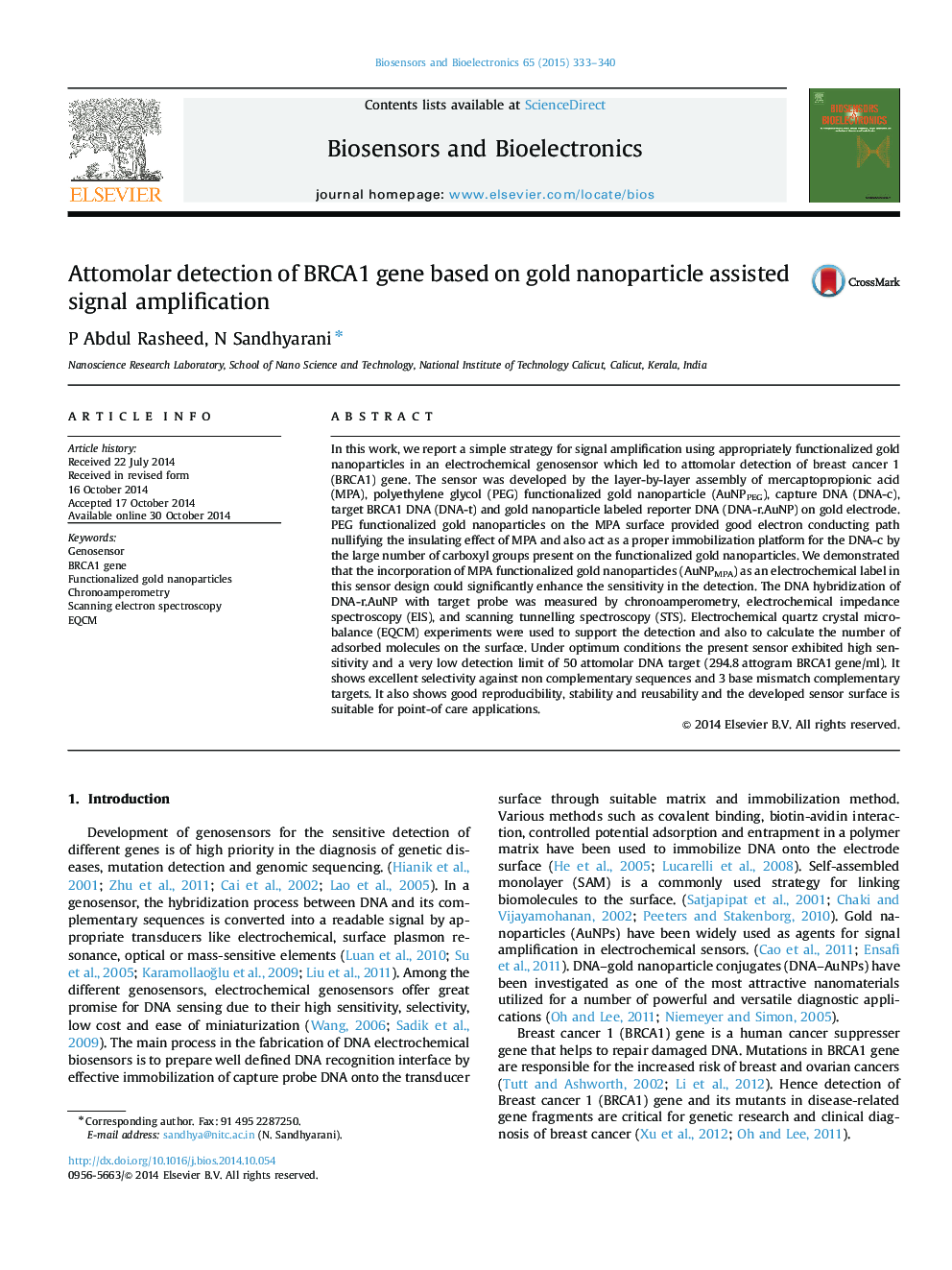| Article ID | Journal | Published Year | Pages | File Type |
|---|---|---|---|---|
| 866391 | Biosensors and Bioelectronics | 2015 | 8 Pages |
•A highly sensitive electrochemical genosensor which led to attomolar detection of BRCA1 gene.•Higher sensitivity of the sensor is due to the signal amplification by the use of two appropriately functionalized gold nanoparticles.•Shows excellent selectivity against non complementary sequences and 3 base mismatch complementary targets.
In this work, we report a simple strategy for signal amplification using appropriately functionalized gold nanoparticles in an electrochemical genosensor which led to attomolar detection of breast cancer 1 (BRCA1) gene. The sensor was developed by the layer-by-layer assembly of mercaptopropionic acid (MPA), polyethylene glycol (PEG) functionalized gold nanoparticle (AuNPPEG), capture DNA (DNA-c), target BRCA1 DNA (DNA-t) and gold nanoparticle labeled reporter DNA (DNA-r.AuNP) on gold electrode. PEG functionalized gold nanoparticles on the MPA surface provided good electron conducting path nullifying the insulating effect of MPA and also act as a proper immobilization platform for the DNA-c by the large number of carboxyl groups present on the functionalized gold nanoparticles. We demonstrated that the incorporation of MPA functionalized gold nanoparticles (AuNPMPA) as an electrochemical label in this sensor design could significantly enhance the sensitivity in the detection. The DNA hybridization of DNA-r.AuNP with target probe was measured by chronoamperometry, electrochemical impedance spectroscopy (EIS), and scanning tunnelling spectroscopy (STS). Electrochemical quartz crystal microbalance (EQCM) experiments were used to support the detection and also to calculate the number of adsorbed molecules on the surface. Under optimum conditions the present sensor exhibited high sensitivity and a very low detection limit of 50 attomolar DNA target (294.8 attogram BRCA1 gene/ml). It shows excellent selectivity against non complementary sequences and 3 base mismatch complementary targets. It also shows good reproducibility, stability and reusability and the developed sensor surface is suitable for point-of care applications.
